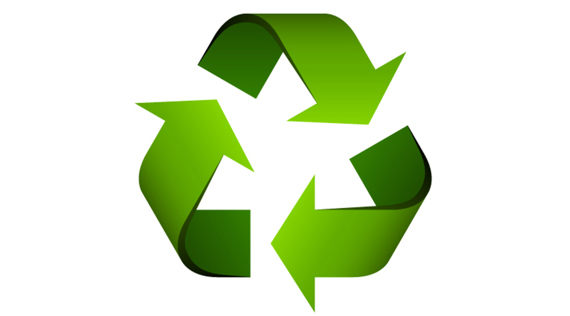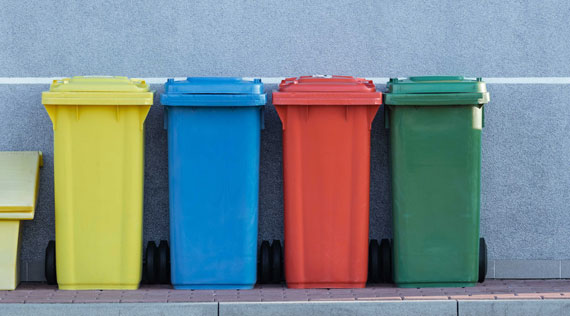One year in, the administration has started work on a range of climate and environmental justice initiatives. Catch up on what's next from the EPA on the circular economy, PFAS, funding and more.
When President Joe Biden was sworn into office last year, he announced ambitious climate goals intending to reduce greenhouse gas emissions, prioritize environmental justice efforts and support recycling infrastructure projects. One year into his term, the administration has promised new actions that could have effects on the waste and recycling sector, especially within the U.S. EPA.
However, only a few have hard and fast 2022 deadlines. Below is a timeline of new rules, research, reports and other actions the administration has promised to deliver sometime this year. See something that’s missing from this timeline? Let us know at waste.dive.editors@industrydive.com.
February
- EPA to release its updated strategic plan
Every four years, the agency releases a framework meant to orient its “vision, priorities, and strategies.” The draft 2022-2026 Strategic Plan previews “new climate and environmental justice strategic goals and emphasis to embed in all EPA work,” as well as plans to continue addressing PFAS and increase recycling efforts. The EPA has already laid out some of these goals in greater detail in documents such as the PFAS Strategic Roadmap and National Recycling Strategy, but the final draft of the strategic plan could say more about how these strategies will play out in the coming years.
Spring
- EPA to release FY 2023 budget proposal
The EPA usually announces its annual budget proposal in the spring. This may include more details on implementing funding for the Save Our Seas 2.0 Act of 2020 and elements of the RECYCLE Act included in the 2021 infrastructure package. Last year, the administration's first EPA budget touted its $11.2 billion FY 2022 proposal as the “largest top-line request in the Agency’s history” meant to reverse “years of declining operational budgets" while placing a greater emphasis on environmental justice initiatives. Once approved by Congress, the FY 2023 budget runs from Oct. 1, 2022, through Sept. 30, 2023.
- EPA to seek comment on designating PFOA and PFOS as hazardous
The EPA expects to soon announce a Notice of Proposed Rulemaking (NPRM) and anticipates especially “robust stakeholder engagement with communities near PFAS-contaminated sites.” Depending on public feedback, the rule could give landfill operators and compliance teams better clarity on how to monitor and measure such chemicals, including how to report releases that meet or exceed a specified amount. The rule could also put certain entities on the hook for costs incurred for PFAS-related cleanup, according to the PFAS road map, but the agency has said this final rule won't be solidified until summer 2023.
- EPA to issue advance NPRM on various other PFAS chemicals
As it works on its PFOS and PFOA rule this spring, the EPA also plans to seek public comment on whether to pursue hazardous substance designations for various other types of PFAS. More specific timelines could take shape as the agency gathers further information on the health effects of those PFAS and decides how to measure them in groundwater.
Fall
- EPA aims to establish a national drinking water regulation for PFOA and PFOS
A proposed rule to regulate these PFAS in drinking water is expected in the fall, which is significant because currently there are no established national drinking water regulations for any PFAS. As the EPA works on this proposed rule, it also plans to evaluate additional PFAS for which to possibly enact similar drinking water regulations. A final regulation for PFOA and PFOS could come in fall 2023, which may also play a role in influencing PFAS drinking water regulations at the state level.
- EPA to issue more data on destruction/disposal of certain PFAS materials
The EPA has already released draft guidance on PFAS disposal and destruction methods, an important document for waste industry operators. The agency is required to update the information every three years with the most up-to-date science. Sometime this fall it plans to release more data on the perceived safety and viability of methods such as using deep well injection, landfilling and thermal treatment. However, fully updated guidance isn’t expected until December 2023. The guidance may also be helpful for operators weighing whether PFAS disposal could be a future business opportunity.
Winter
- Infrastructure grant funding kicks in
About $350 million in recycling-related funding from the Infrastructure Investment and Jobs Act is expected to start becoming available by the end of the year, including funding for a range of local government recycling education efforts.
Coming soon?
- Carlton Waterhouse’s confirmation to run EPA’s OLEM
His nomination to serve as assistant administrator of the Office of Land and Emergency Management stalled in December after a tie vote in the Senate Committee on Environment and Public Works. The same committee is set to reconsider the nomination sometime this year. The Biden administration and other Democrats touted Waterhouse as a nominee with a strong environmental justice background, but Sen. Shelley Moore Capito (R-W.Va.), a ranking member of the committee, was among those who expressed concerns over Waterhouse's objectivity.
- Federal Trade Commission review of the Green Guides
The FTC is expected to review its guide on environmental marketing claims, known as the “Green Guides,” sometime in 2022. This will be the first update since 2012. Any updates to the guide, which lays out standards for preventing deceptive recycling claims, could have an influence on future state and federal laws meant to dictate what materials go in the blue bin. Recent examples include a “truth in labeling” bill passed in California last year and Oregon’s new extended producer responsibility law, which includes a task force meant to evaluate misleading or confusing claims about certain products’ recyclability.
- National recycling goal measurement updates
More details on how the EPA plans to measure the national recycling rate and its progress toward achieving a 50% recycling rate by 2030 could come sometime this year. According to the National Recycling Strategy, the agency plans to release an updated Recycling Measurement Guide in 2022, adding that it will “then assess the national recycling goal.”
- More details on national circular economy goals
The EPA in November said it was moving toward a circular economy approach to meeting environmental goals, particularly when it comes to recycling. It has promised to publish further research documents about its approach to source reduction, reuse, plastics and food waste as a companion to the national strategy, which could start coming this year and into 2023.
- Updated Facts and Figures data
The EPA is overdue to release its national municipal solid waste data sets, which include metrics about waste generation, recycling, composting, combustion and landfilling. Currently, the most updated information is from 2018. The EPA has not yet announced the timing of its next release.
- Potential draft regulations on chemical recycling
The EPA recently solicited information and comments to help draft potential regulations on pyrolysis and gasification, two technologies typically used for chemical recycling. The EPA received numerous comments from stakeholders about how possible regulations could affect the recycling industry, environment and economy. The EPA has not yet set a date as to when it might release draft regulations.

